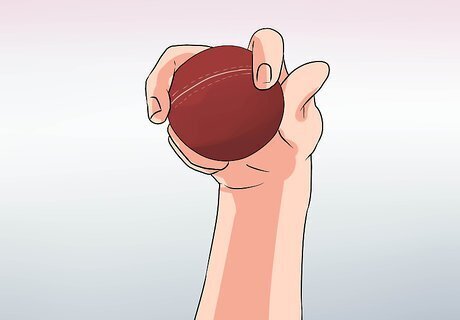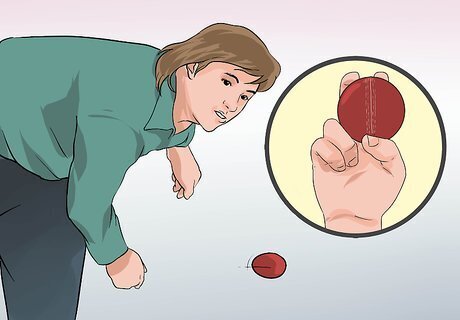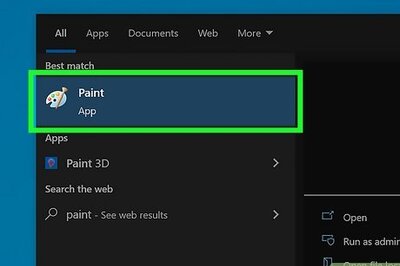
views
X
Research source
Practicing Your Seam Position

Take your cricket ball in hand. Be sure that you have a good condition, regulation cricket ball for practice. It would be a shame if your hard work was wasted by practicing with a non-regulation ball.

Place your fingers with respect to the seam. Your fingers should form a narrow V, with your forefinger slightly to the top left of the seam and your middle finger on the other side of the seam. Your thumb should complete your grip, being directly in line with the path of the seam. The majority of your tension on the ball should be from your thumb and forefinger, with your middle finger used to balance the ball.

Toss your ball into the air. Do not bowl yet; this is practice! Using only your wrist, toss your ball with the intention of keeping the seam as steady as possible. Repeat this practice until your seam is consistently straight and the motion is natural.

Attempt air bowling. Lying on the ground, hold your ball in the V-grip position. In a controlled fashion, imitating how you would bowl on the pitch, toss your ball into the air. Try to keep the seam of the ball straight Try to control the position of your wrist; a straight wrist that is kept behind the ball will help maintain the form you need for consistent seam bowling.

Give the "side on" position a try with your seam ball. Many coaches encourage side on bowling, as this facilitates many bowling actions. A bowler is considered to have a side on position when his or her back foot, chest, and hips are lined up toward to the batsman at back foot contact. While practicing in this position, start bowling at a slow to moderate pace, with your main goal being keeping the seam of your ball as straight as possible.

Bowl in the "chest on" (front on) position. Chest on bowling requires the bowler to align his hips and chest towards the batsman upon back foot contact. Even if this isn't your (or your coach's) preferred approach to a swing, practicing your seam ball in a variety of ways will likely give you a better kinesthetic understanding of the seam ball motion.
Bowling a Seam Ball on the Pitch

Grip your ball according to your swing. For a faster swing, you will want a more narrow grip between your forefinger and middle finger, with little space between these fingers and the seam of the ball. More space between your fore and middle finger will translate to a slower ball.

Pitch your ball at a fast pace. Seam bowling is a subcategory of fast bowling and capitalizes on the imperfections of a cricket ball to generate bounce, making the pitch more difficult to hit. Professional bowlers attain speeds up to 90 miles per hour. If you are just starting out learning seam bowling, aim for a moderate-paced pitch and focus on technique. Once you are confident in your seam technique, you can add more power to increase speed.

Attempt an "in swinger." Shift your grip on the seam in such a way that your middle finger takes primary position on the seam while your forefinger moves farther off to the side. When you bowl in this way it causes spin, which will make the ball "swing in" toward the batsman.

Bowl an "out swinger." Hold the seam with your forefinger laid mainly in line with and on top of the seam. Your middle finger should be off to the side of the ball, away from the seam. When you bowl in this way, the left side of the ball will spin away from the batsman.

Adjust your grip according to style. Though clean form and consistency will help you achieve results, there will be differences in body type and style that might necessitate you hold the ball in a fashion unique to yourself. Don't be afraid to modify your style when trying to find your ideal stance.




















Comments
0 comment